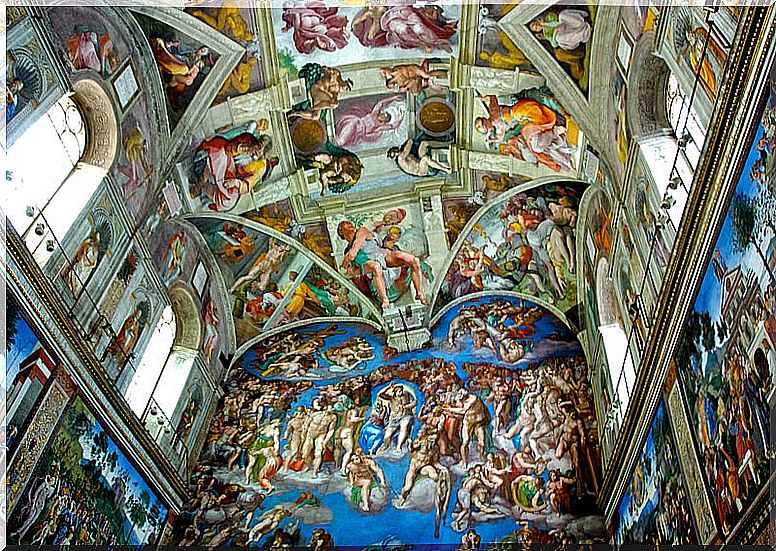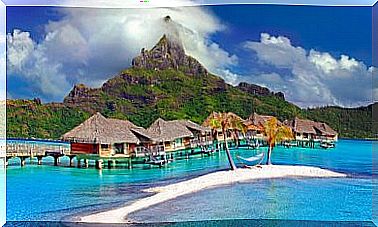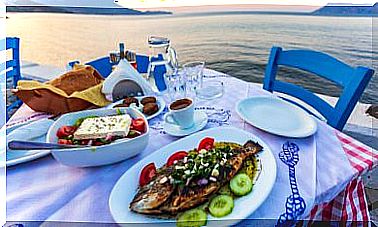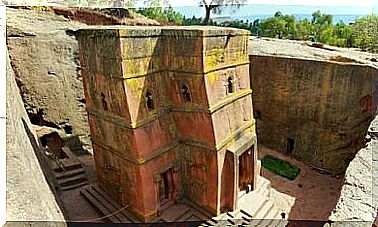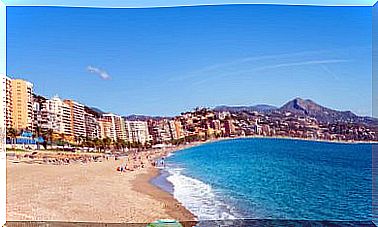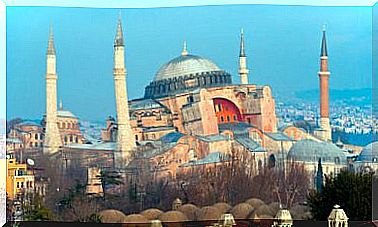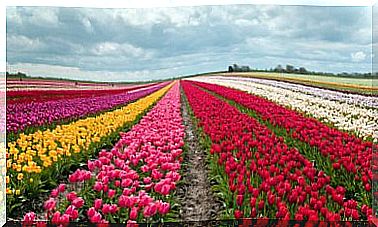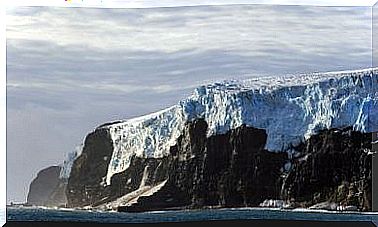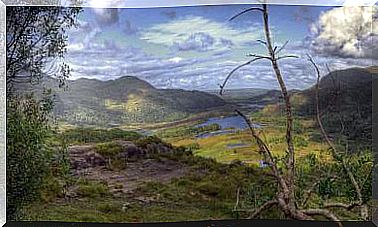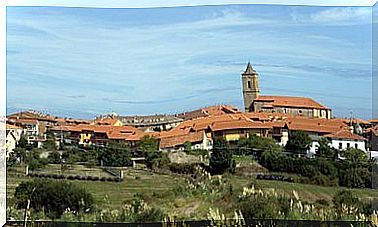Works By Rafael Sanzio That Are Worth Knowing
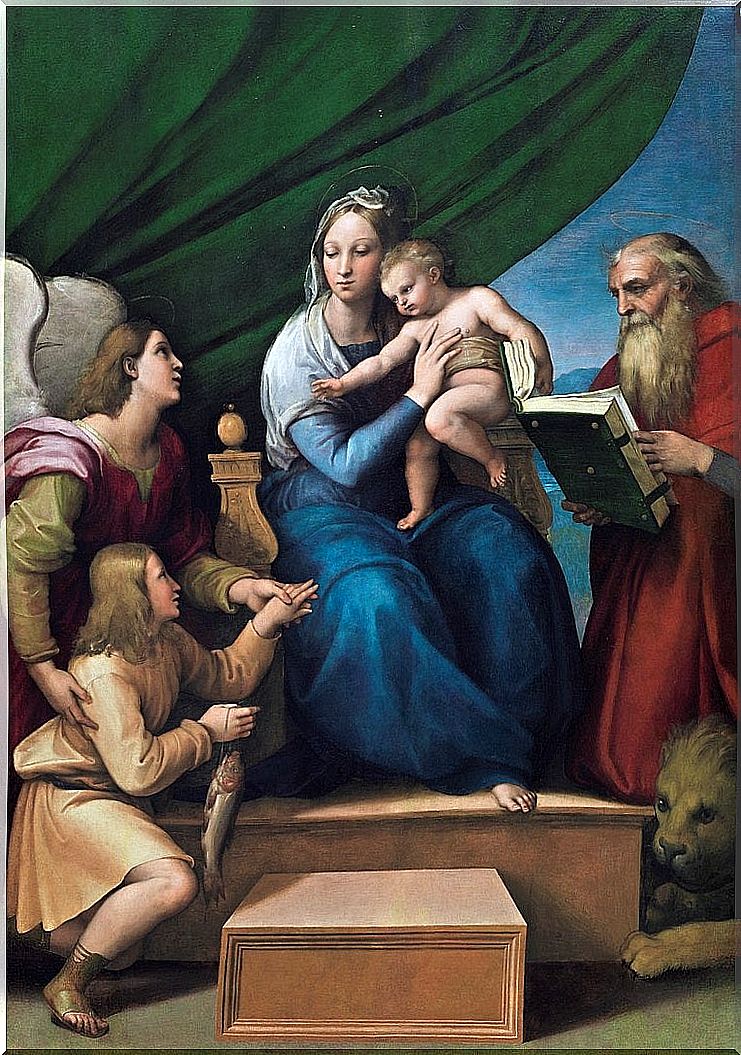
This Italian painter and architect, one of the greatest exponents of the Renaissance, had a short but prolific artistic career. A good part of Raphael’s best works can be admired in the Vatican, although there are many others spread throughout different cities. We are going to show you the most representative ones.
The works of Raphael during his stay in Florence
The artist worked in Florence from 1504 to 1508. There, he would soak up the influence of the art of Da Vinci and Michelangelo. These are the most outstanding works of Rafael in those four years of his life:
The betrothal of the Virgin
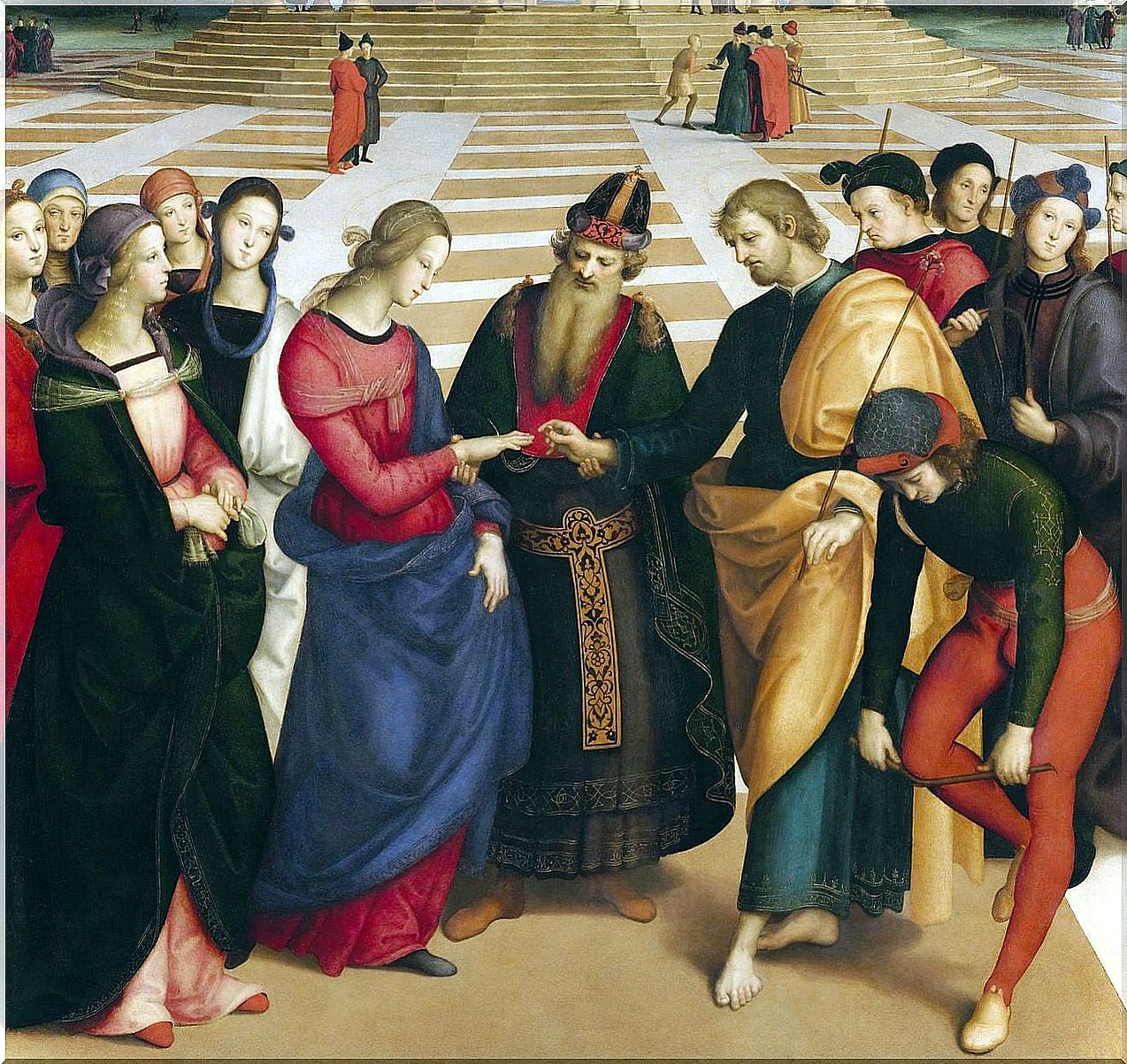
A frequent theme in Christian art and during the Renaissance in Italy is the link between the Virgin Mary and Saint Joseph. In this case, it is an oil on panel made in 1504 and which is currently in the Pinacoteca de Brera in Milan.
In it, you can see the clear influence of what has been considered his teacher: Pietro Perugino. He uses the same technique in terms of spatial organization and search for harmony. However, it is his brushstroke, light and firm, which gives this work an unsurpassed quality.
Thanks
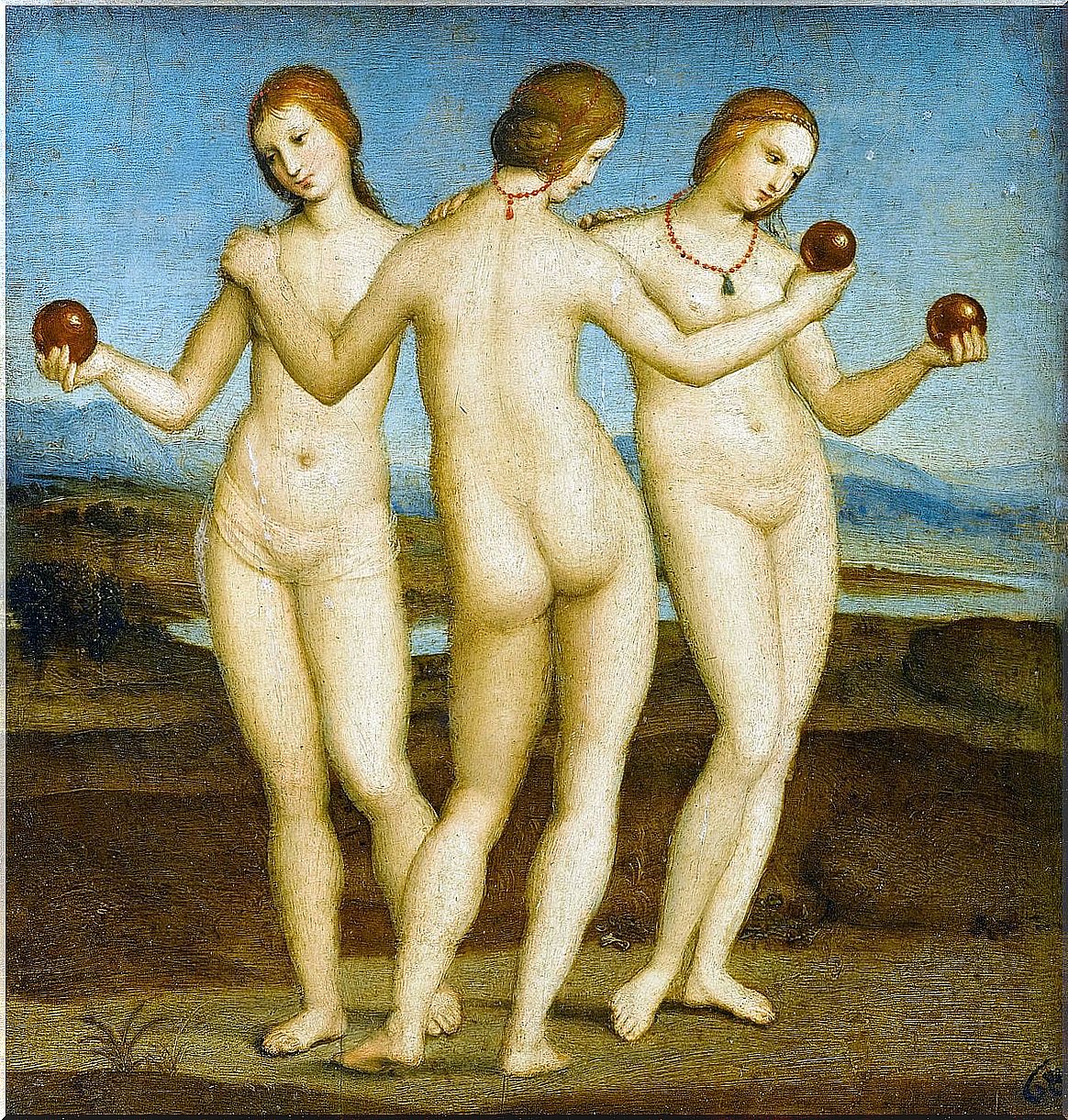
It is one of the few works by Raphael whose theme is classical mythology. In it, you can see the three graces, which represented the three feminine virtues of the time: chastity, beauty and love.
The Three Graces of Siena sculpture served as a source of inspiration for this original and modern painting, which stands out for its harmony, proportion and serene beauty.
Self portrait
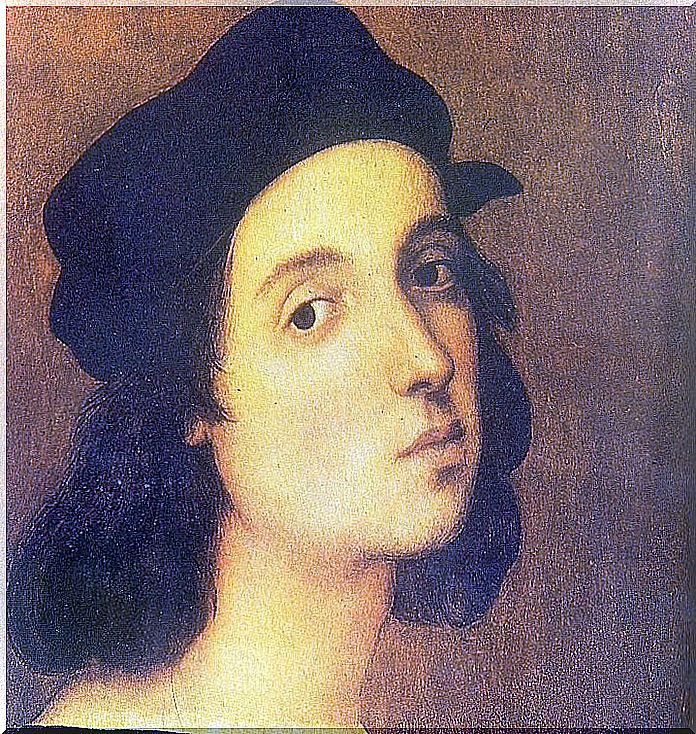
It is one of the few self-portraits of Rafael. In fact, it is the only oil painting in which it appears alone. It is believed that it represents the painter in his youth, when he was still a disciple of Perugino. It is kept in the Uffizi Gallery in Florence.
The beautiful gardener
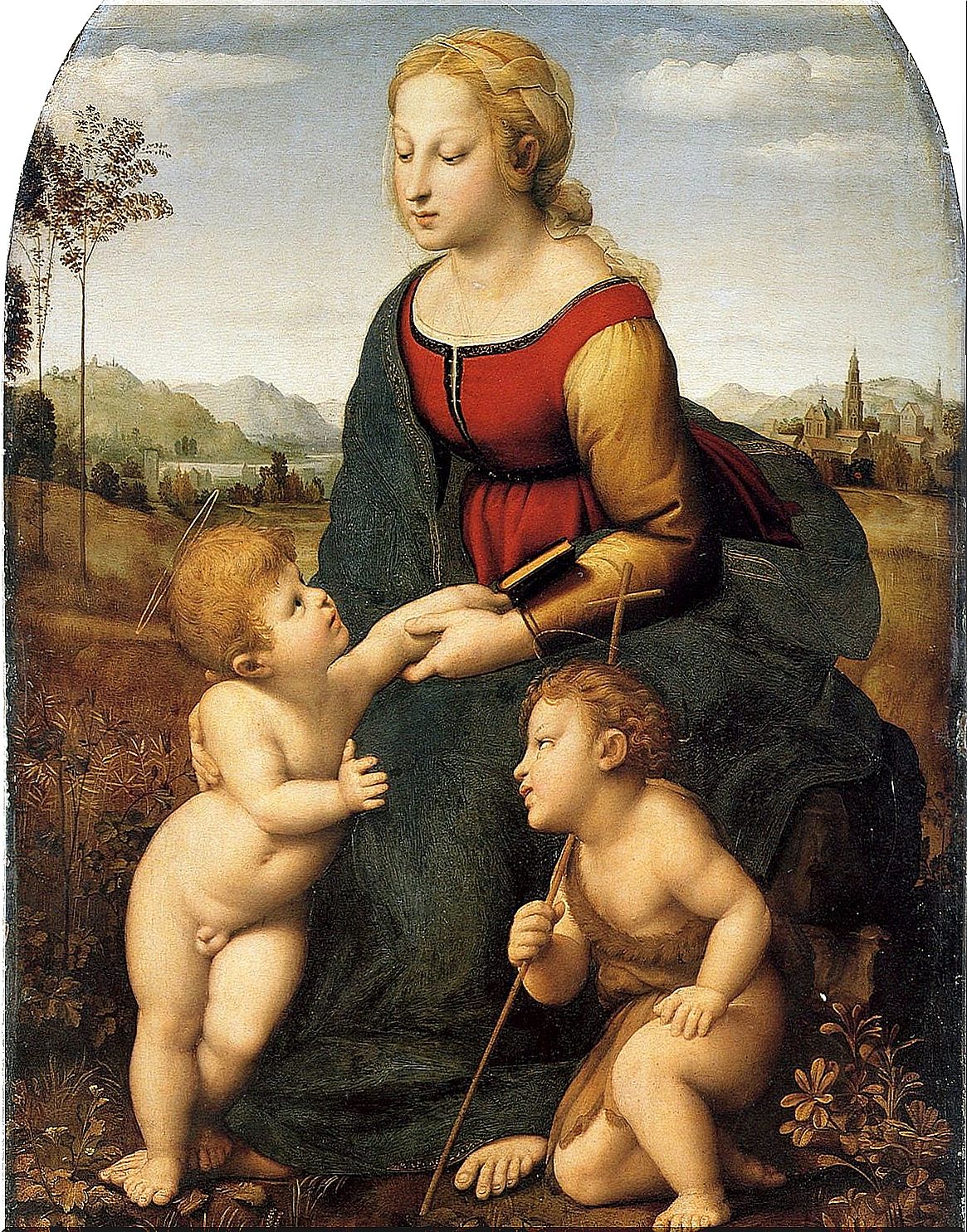
In this oil painting, Rafael painted the Virgin accompanied by Jesus and Saint John in a garden full of plants; hence the name of the painting. A pyramidal composition in which the three characters look at each other gently.
It is one of Raphael’s works that best shows the mastery of composition and expression that he so dominated, as well as the characteristic serenity of the painter’s art. It can be seen in the National Gallery, London.
Raphael’s stays in the Vatican
In 1508, Pope Julius II commissioned Raphael (who was only 25 years old) to decorate his rooms in the Vatican. For this reason, the painter moved to Rome, where he lived for 12 years, until the end of his days.
The first of the rooms he began to paint is the Stanza della Signatura, which is still considered Raphael’s great masterpiece today. In it, you can see three magnificent frescoes: The School of Athens, Parnassus and The Dispute of the Sacrament.
The school of Athens
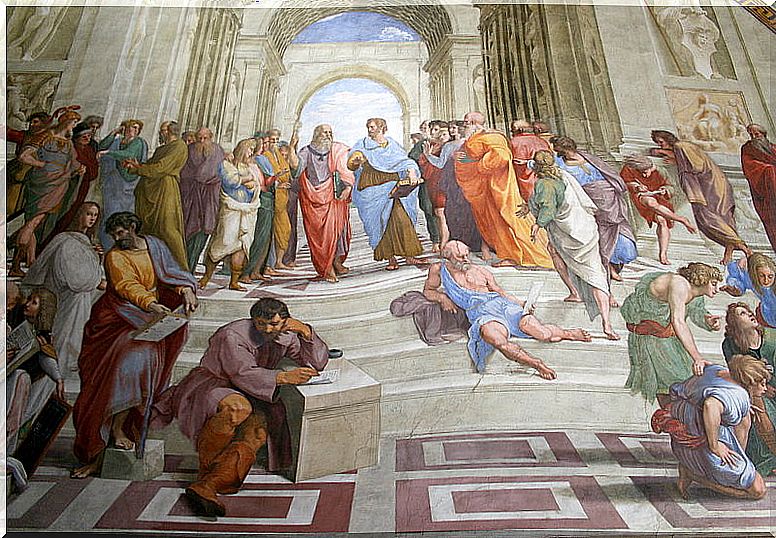
It is one of the best known works of Rafael. In it, you can see the most important philosophers, scientists and mathematicians of the classical era : Plato, Socrates, Aristotle, Pythagoras or Heraclitus, among others.
As a curiosity, we can point out that, in the fresco, we can also see the painter Miguel Ángel and Raphael himself .
The sacrament dispute
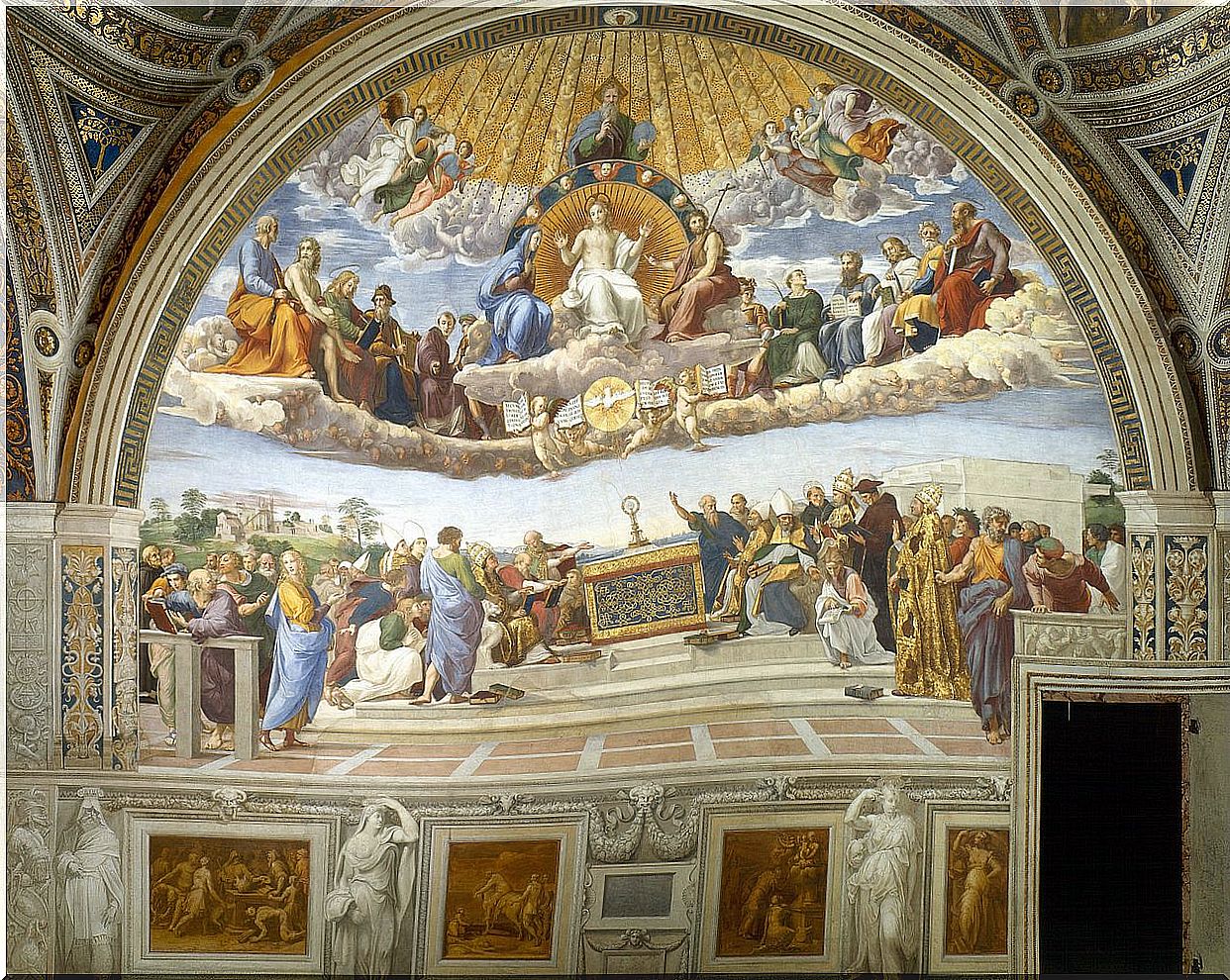
It was the first one performed by Rafael at the Stanza della Signatura . This fresco could be interpreted in contrast to the School of Athens; that is, it would represent theological truth versus philosophical truth.
In its upper part, you can see the Eucharist and in the lower area you can see some of the Church’s fathers, including Saint Augustine, Saint Jerome or Gregory the Great.
The Parnassus
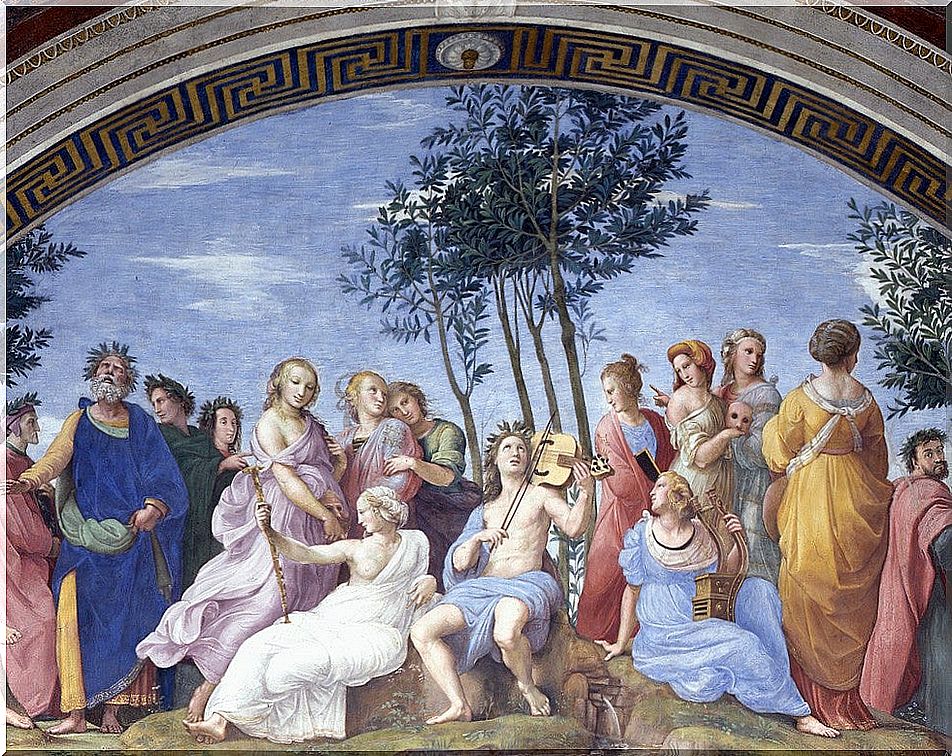
It is located in the northern part of the Stanza della Signatura . It shows the mythological Mount Parnassus, the sacred mountain where Apollo and the nine muses reside. There are also poets of classical antiquity and others much later, such as Dante or Petrarca.
Raphael made it in 1511. It was thus the third fresco to be painted in the room, after The Dispute of the Sacrament and the School of Athens.
Mass of Bolsena
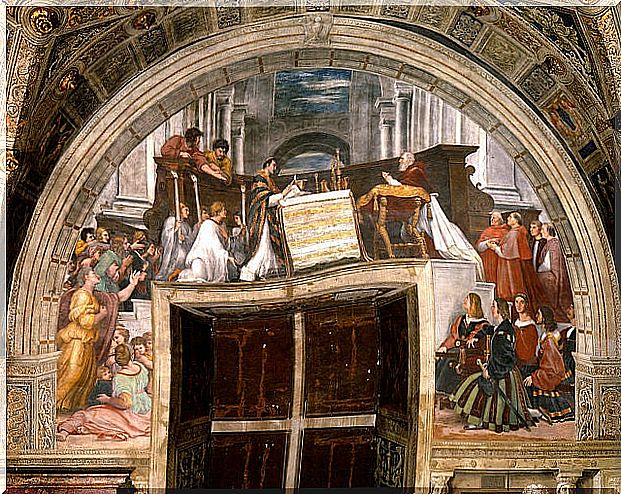
This fresco is also found in the so-called Raphael Rooms , but in the Stanzia di Eliodoro . It shows a miracle that occurred in 1263. It reflects the moment in which a somewhat skeptical priest celebrates a mass in the city of Bolsena and, during the consecration, blood begins to flow from the host.
Liberation of Saint Peter
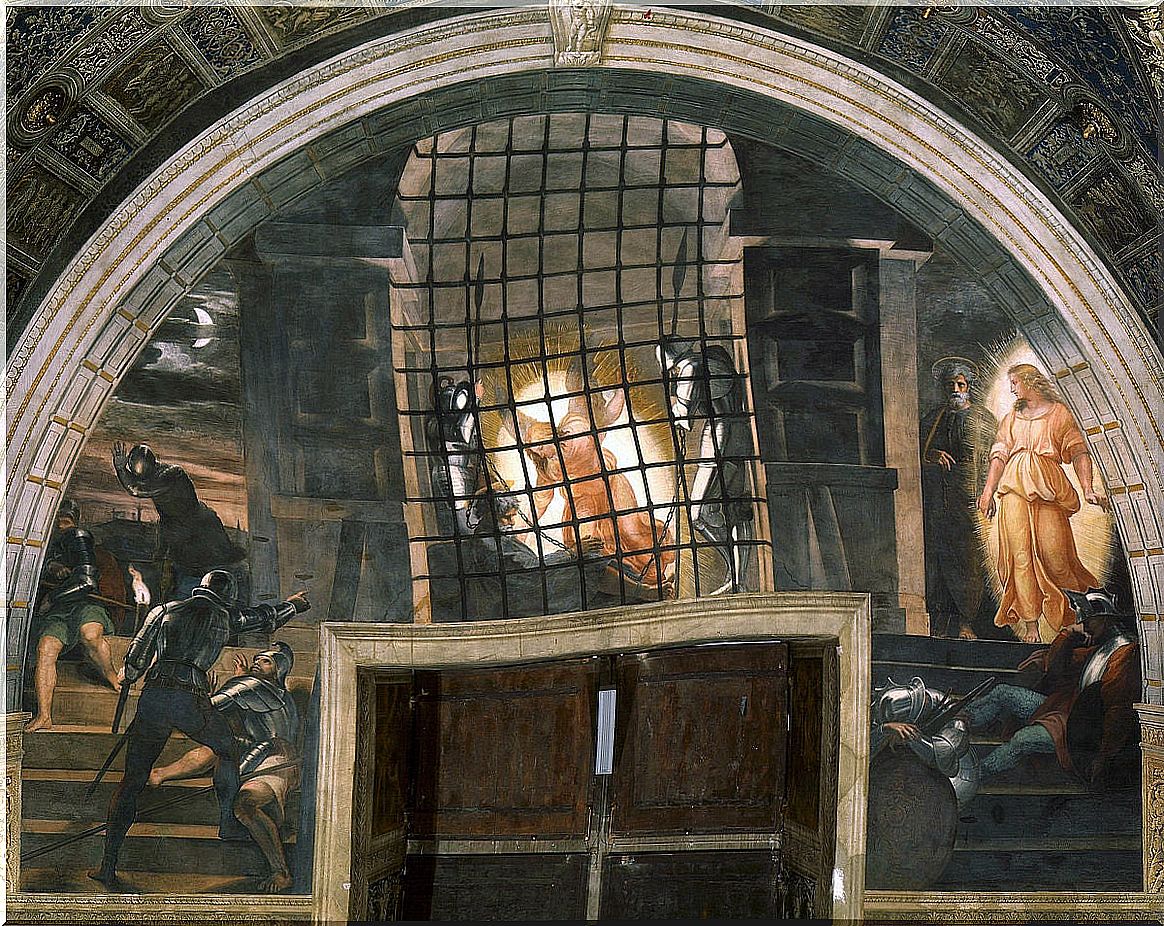
It can also be admired at the Stanzia di Eliodoro . It represents the release of Saint Peter from the prison of Agrippa I the Great (known as Herod in the New Testament). Some facts that are related in three different scenes. Raphael enlisted the help of Giulio Romano, one of his assistants, to paint this fresco in 1514.
The Borgo fire
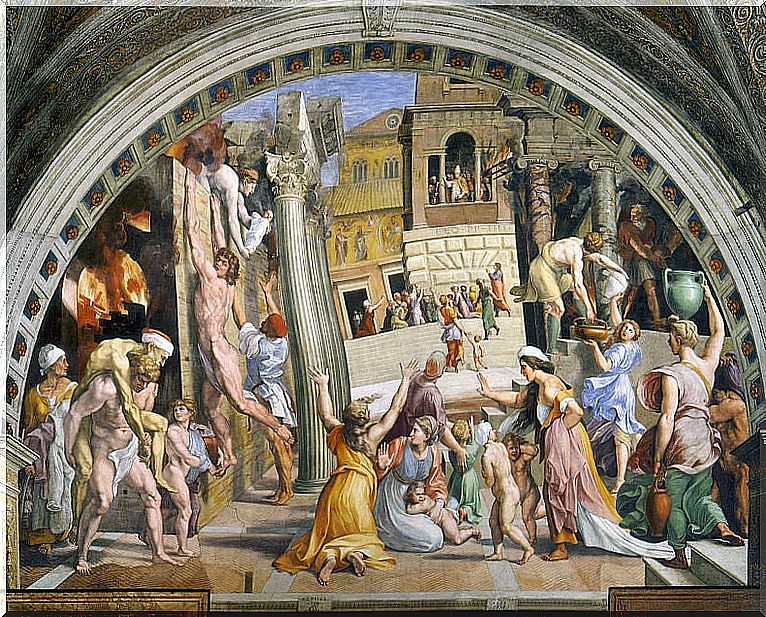
This fresco gives its name to another of the rooms in the Vatican Rooms, the Stanza dell’incendio del Borgo . It represents the miracle attributed to Pope Leo IV in 847, when, after making the sign of the cross, he managed to put out a fire.
It is a fresco in which more movement is perceived than in others by the artist. For the most part, it was made by Giulio Romano, following, yes, Raphael’s sketches.
Other works by Rafael
The Triumph of Galatea
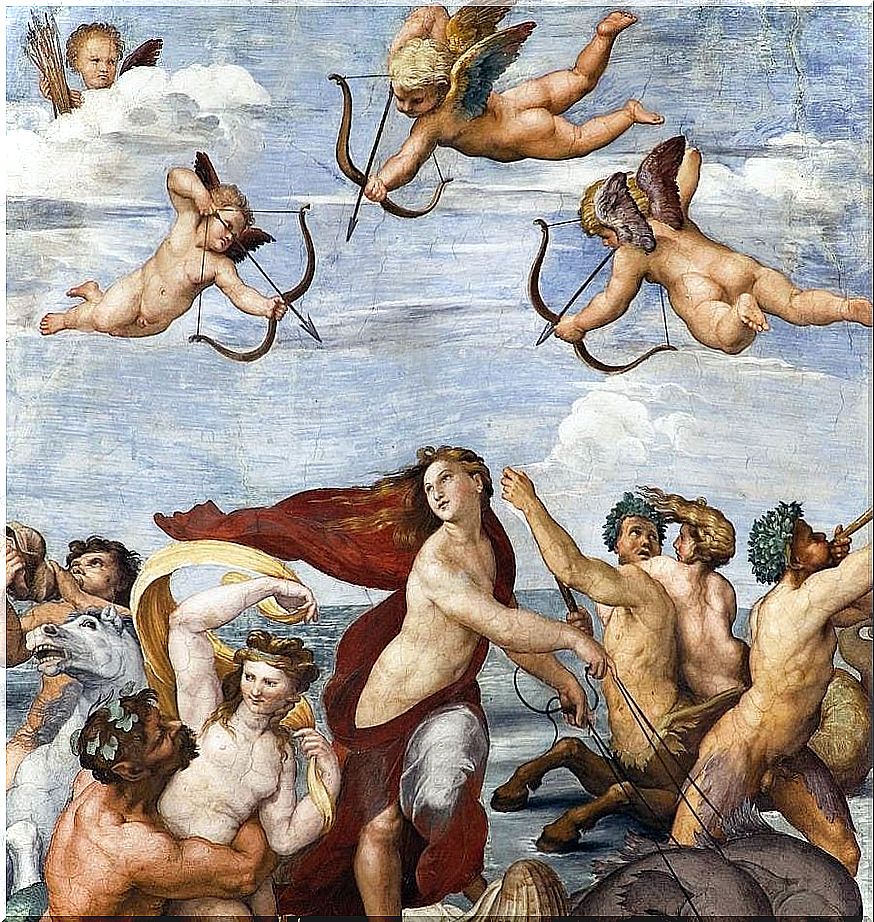
It represents Galatea and the triumph of platonic love. This is represented by angels, while carnal love is shown in the form of merfolk, centaurs and nereids. Galatea, with a serene look, appears on a shell carried by dolphins.
Rafael painted this fresco in 1511, during his stay at Villa Farnesina, in the Roman neighborhood of Trastevere.
Sistine Madonna
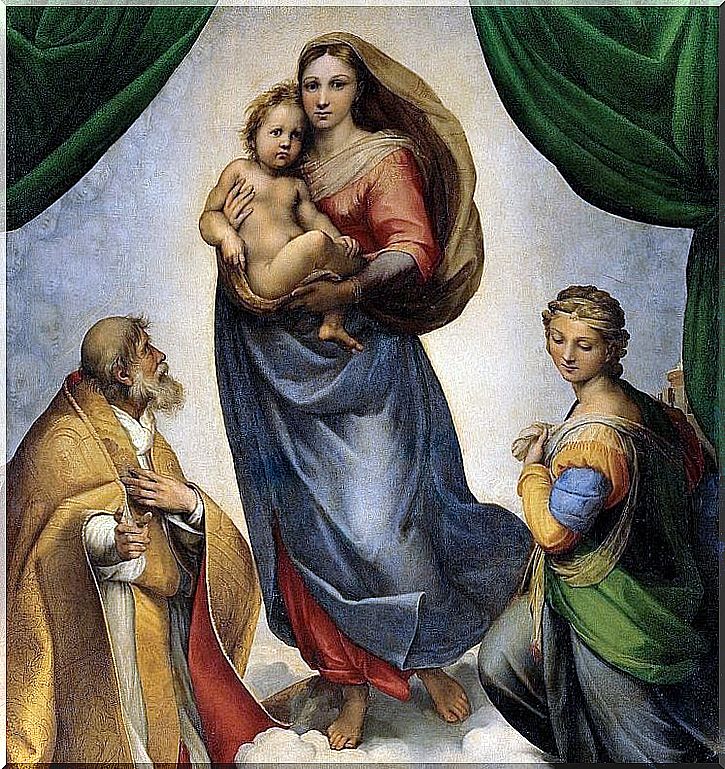
In this canvas the Virgin, the Child Jesus, Saint Sixtus and Saint Barbara are represented on a bed of clouds. It is believed that this work was conceived to decorate the tomb of Pope Julius II, since Saint Sixtus was the patron of his family.
The name of Saint Sixtus comes from Latin and means “six”, the number of figures that appear on the canvas. It is located in the Gemäldegalerie Alte Meister , Dresden (Germany).
Portrait of Baltasar Castiglione
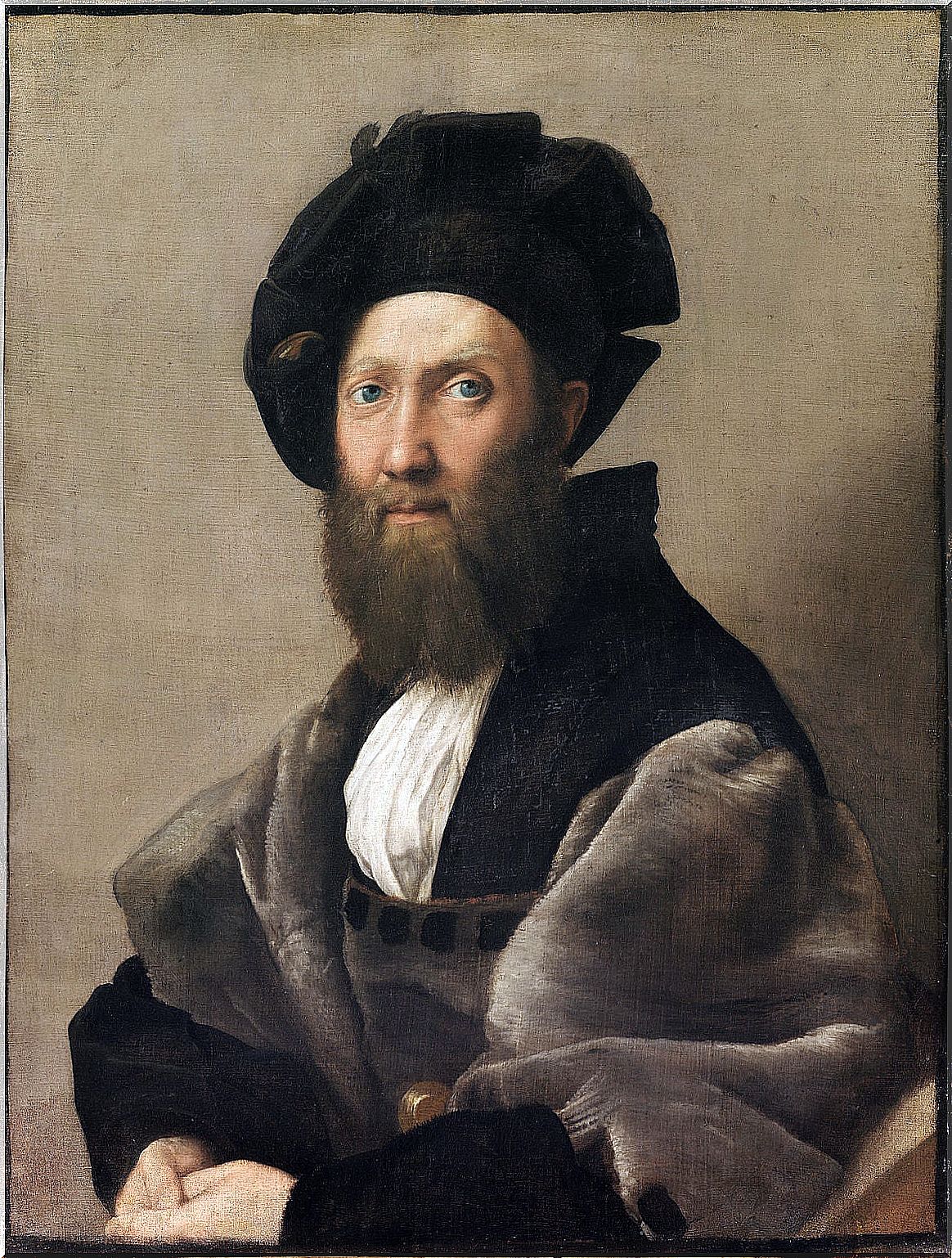
Rafael portrayed his friend during his stay in Rome. He masterfully captured the penetrating gaze and circumspect but affable expression of Castiglione, an Italian humanist, courtier, writer, nobleman and diplomat. It can be seen in the Louvre museum in Paris.
The evening
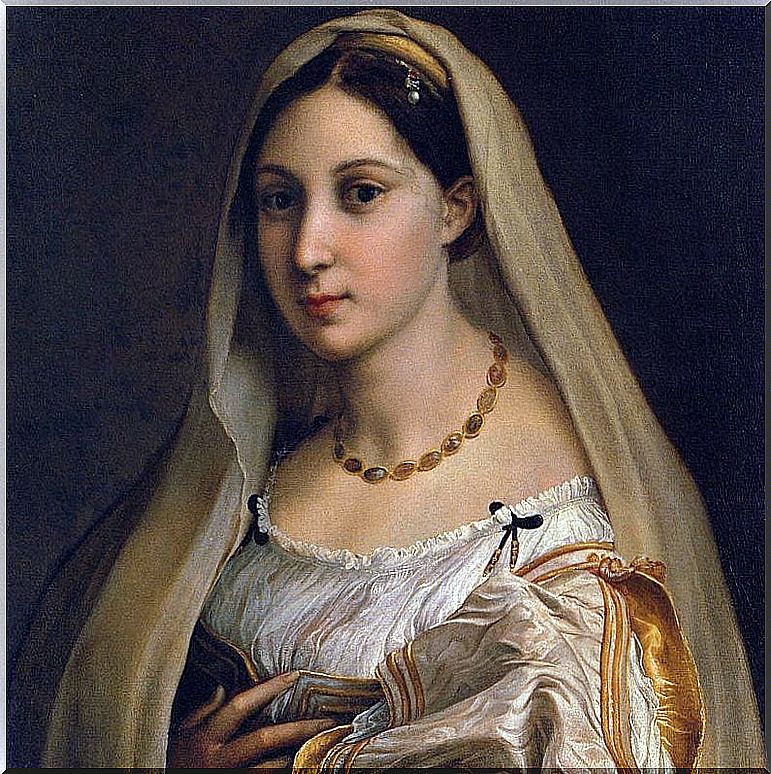
This famous portrait shows a woman who also appears in another of Rafael’s works, La Fornarina . It is believed, although it has not been proven, that it is Margherita Luti, Rafael’s lover and daughter of a baker.
In this beautiful portrait, the contrast between the calm of the face and the agitated undulations of the clothes stands out, as well as the great prominence of light.
Portrait of Andrea Navagero and Agostino Beazzano
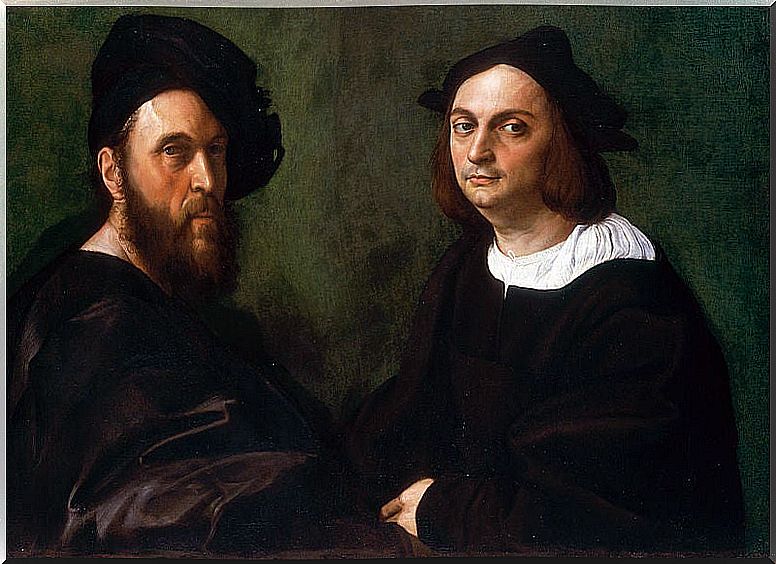
It was made in oil on canvas in 1516 and is kept in the Doria Pamphili Gallery in Rome. Those portrayed are two Italian humanists who are friends of the painter, who manages to capture all the features of their faces in detail. The looks are so real that, if we approach the painting, it even seems that our eyes are moving.
La Fornarina
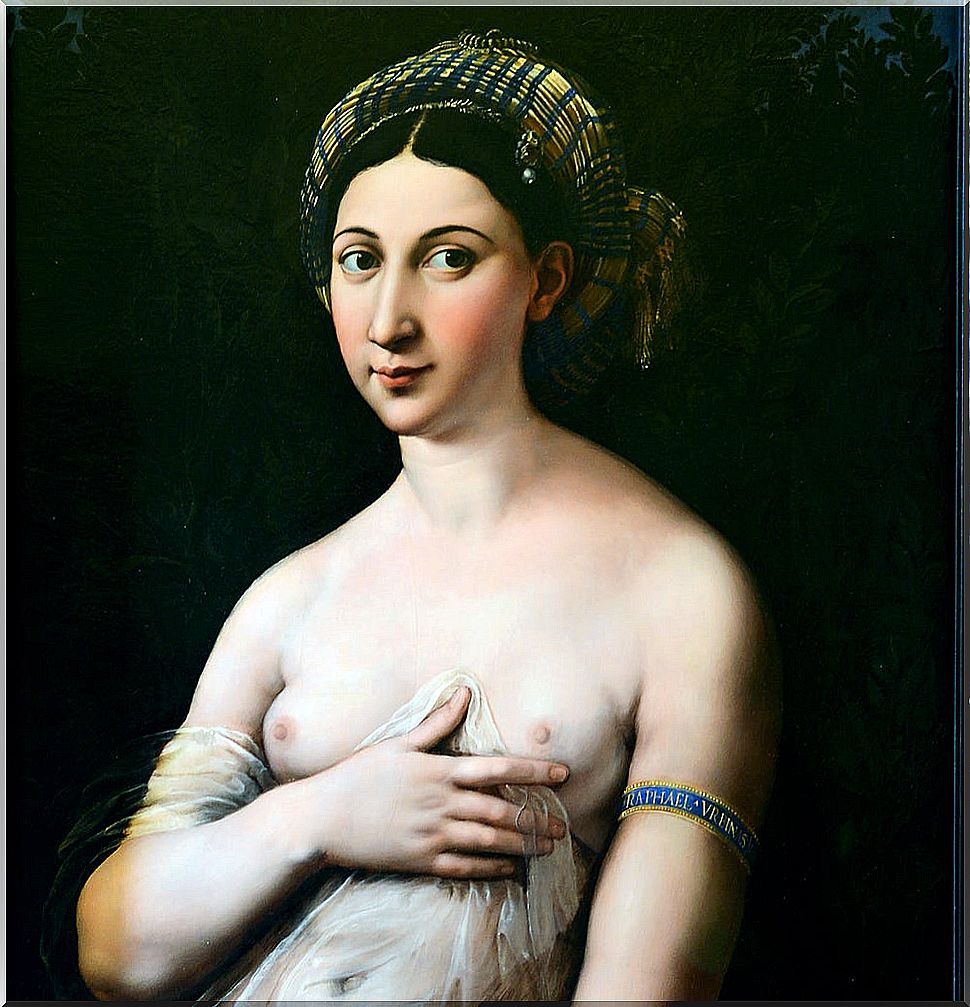
His real name is Portrait of a Young Woman and it is another of the most representative works of Rafael. A painting full of sensuality in which, as in La Velada , Margherita Luti is represented, this time half-naked and looking at the viewer.
The painting was painted in oil on panel between 1510 and 1517. When the painter died, the work went to the collection of the Countess of Santaflora; then, it would go to the National Gallery of Ancient Art in Rome, where you can admire it.
The Transfiguration
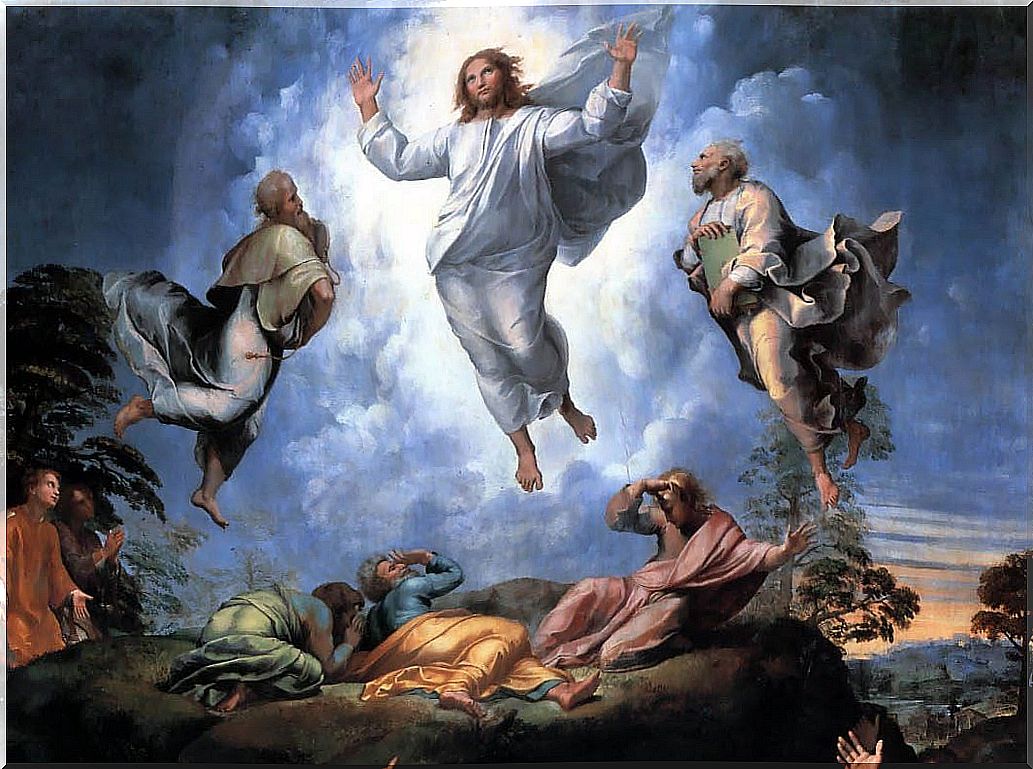
It was carried out between 1517 and 1520 and was unfinished, so when Rafael died it had to be finished by his apprentice. It is kept in the Vatican Gallery. It was commissioned by Julio de Medici for the cathedral of Narbonne, in France. It depicts the apostles unsuccessfully trying to free a demon-possessed child.
